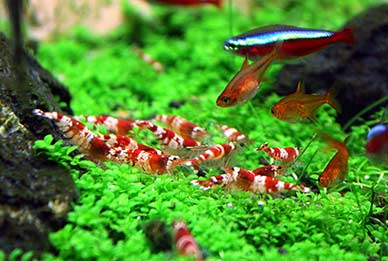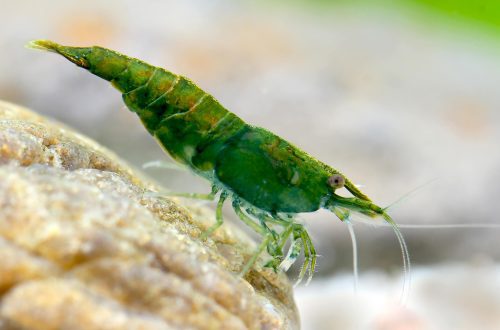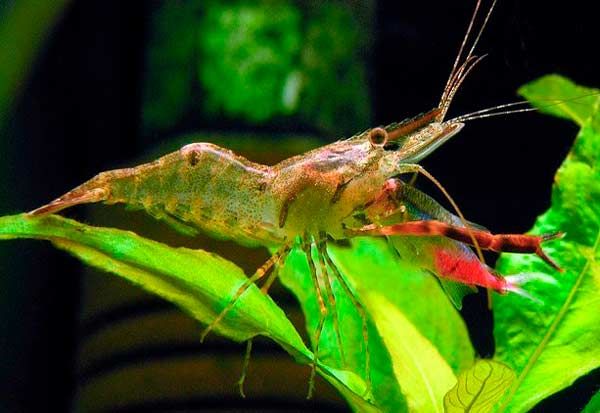
ring shrimp

The ring-armed or Himalayan shrimp, scientific name Macrobrachium assamense, belongs to the Palaemonidae family. Medium-sized shrimp with impressive claws, reminiscent of those of crabs or crayfish. It is easy to keep and can be recommended for beginner aquarists.
Contents
Habitat
The species is native to the river systems of South Asia in India and Nepal. natural habitat is mostly limited to river basins originating in the Himalayas, such as the Ganges.
Description
Outwardly, they resemble small crayfish due to enlarged claws, which have a striped color that resembles rings, which is reflected in the name of the species. Rings are characteristic of young individuals and females. In adult males, the claws acquire a solid color.
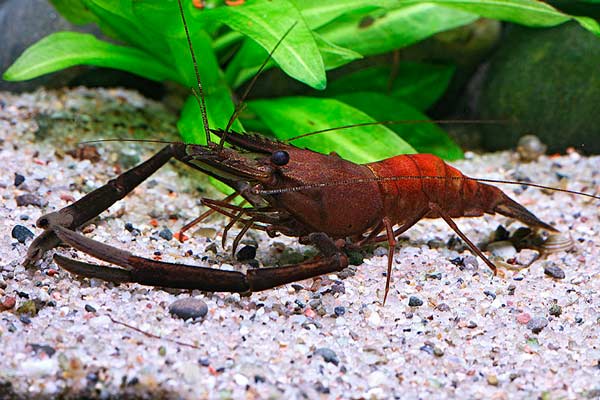
Sexual dimorphism also appears in size. Males grow up to 8 cm, females – about 6 cm and have smaller claws.
The color varies from gray to brown with a pattern of darker lines and speckles.
Behavior and Compatibility
As a rule, representatives of the genus Macrobrachium are difficult aquarium neighbors. The ring-armed shrimp is no exception. Small fish up to 5 cm long, dwarf shrimp (Neocardines, Crystals) and small snails can be potential food. This is not an act of aggression, but the usual omnivorous.
Larger fish will be relatively safe. But it is worth remembering that overly curious aquarium inhabitants who will try to pinch and push the Himalayan shrimp will face a defensive reaction. Large claws can inflict a serious wound.
With a lack of space and shelters, they are at enmity with relatives. In spacious tanks, relatively peaceful behavior is observed. Adult individuals will not chase juveniles, although, if possible, they will definitely grab a young shrimp that happens to be nearby. The abundance of shelters and food gives good chances for the development of a large colony.
Maintenance and care, arrangement of the aquarium
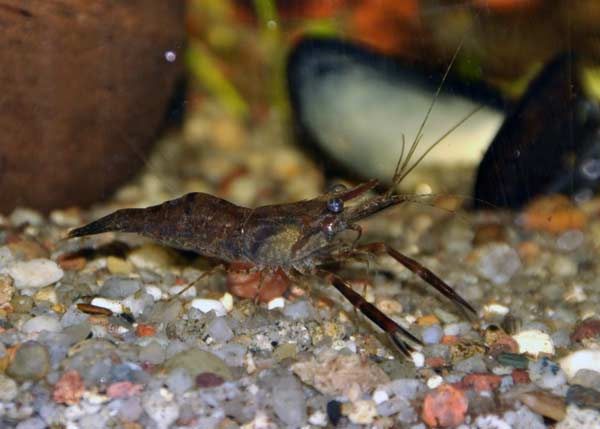
For a group of 3-4 shrimp, you will need an aquarium with a length and width of 40 cm or more. The height does not matter. The decoration should use a lot of aquatic plants and form some hiding places, for example, from snags and stones, where ring-armed shrimp could retire.
Not demanding on water parameters, able to live in a wide range of temperatures and pH and GH values.
Clean water, the absence of predators and a balanced diet are the keys to successful keeping of Himalayan shrimp.
General hardness – 8–20°GH
Value pH — 6.5–8.0
Temperature — 20–28°С
Food
Omnivorous species. They will accept anything they can find or catch. They prefer high-protein foods over plant-based foods. It is recommended to feed with bloodworms, gammarus, pieces of earthworms, shrimp meat, mussels. They are happy to eat popular dry food designed for aquarium fish.
Breeding and reproduction
Unlike some related species, the ring-armed shrimp breeds exclusively in fresh water. Depending on the age, the female can produce from 30 to 100 eggs, which is not much for shrimp. However, the small number is compensated by the frequency of spawning, which occurs every 4–6 weeks.
The incubation period is 18–19 days at 25–26°C. The juvenile appears fully formed and is a miniature replica of adult shrimp.
Himalayan shrimp eat their offspring. In a large aquarium with many plants, the chances of juvenile survival are quite high. If it is planned to increase survival, then it is recommended that the female with eggs be placed in a separate tank and returned back at the end of spawning.




